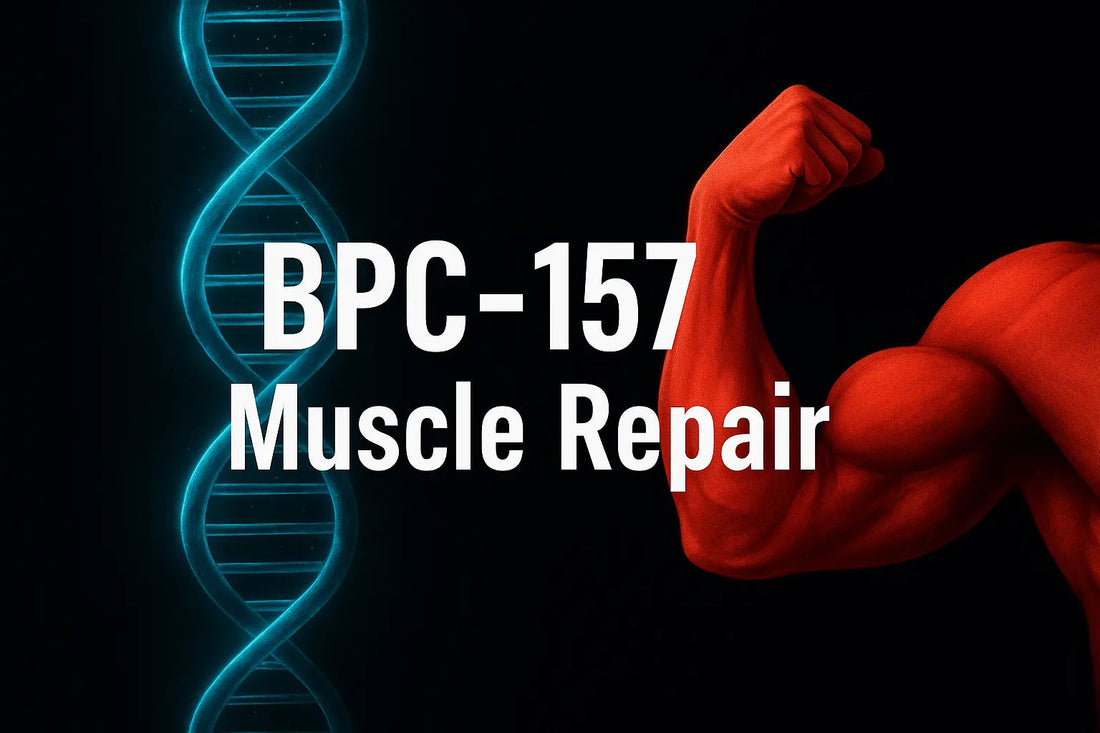
BPC-157 muscle repair: How the Peptide Blend Speeds Muscle Recovery
Share
Have you ever struggled with slow muscle recovery after intense workouts or injuries? The science behind BPC-157 muscle repair offers promising solutions, especially when combined with TB-500, another powerful peptide. This peptide blend is gaining attention for its ability to accelerate healing, reduce inflammation, and improve overall muscle repair. Understanding how these peptides work—and why their combination is effective—can help athletes, fitness enthusiasts, and anyone recovering from muscle damage regain strength faster and get back into action. Let’s explore the mechanisms, benefits, and practical applications of the BPC-157 and TB-500 peptide blend in muscle recovery.
Understanding BPC-157 Muscle Repair
What is BPC-157?
BPC-157, short for Body Protection Compound-157, is a synthetic peptide derived from a protein found naturally in human gastric juice. Its remarkable healing properties have been demonstrated mainly in animal studies, where it supports tissue regeneration and reduces inflammation.
How BPC-157 Supports Muscle Healing
BPC-157 works primarily by promoting angiogenesis—the formation of new blood vessels—thereby improving blood flow to injured muscles. Enhanced circulation means more oxygen and nutrients reach damaged tissue, aiding faster repair and recovery. Additionally, BPC-157 modulates inflammatory responses, which helps minimize pain and swelling during the healing process.
- Accelerates tendon, ligament, and muscle repair
- Reduces inflammation and oxidative stress
- Stimulates collagen synthesis crucial for muscle tissue strength
- Protects surrounding tissues from further damage
These combined effects make bpc 157 muscle repair an attractive option for those recovering from strains, tears, or overuse injuries. Moreover, studies have shown it may enhance the expression of growth hormone receptors within muscle and tendon cells, which further supports cell proliferation and regeneration.
The Synergistic Role of TB-500 in Muscle Recovery
Introducing TB-500
TB-500 is a synthetic peptide fragment of Thymosin Beta-4, naturally present in most human tissues. It’s known for regulating cell migration and accelerating tissue regeneration, particularly in muscles, tendons, and ligaments.
TB-500’s Mechanisms in Healing
TB-500 boosts recovery by increasing the availability of actin, a key protein involved in cell movement and repair. This action results in more efficient cellular migration to injury sites, supporting new tissue growth and reducing scar formation.
- Enhances flexibility and muscle tone
- Supports anti-inflammatory effects to reduce swelling
- Encourages regeneration of damaged muscle fibers and connective tissue
- Improves overall mobility and structural resilience
By complementing the effects of BPC-157, TB-500 provides a balanced approach to muscle repair that targets both protection and mobility enhancements.
Why Combine BPC-157 and TB-500 for Muscle Repair?
The Science Behind the Peptide Blend
While BPC-157 focuses on protecting muscle tissue and reducing inflammation, TB-500 amplifies cellular movement and regeneration. When combined, the peptides create a synergistic effect that targets multiple pathways in the healing process, leading to faster and more robust recovery.
Benefits of the Combination
- Improved blood flow and nutrient delivery to damaged muscles
- Accelerated collagen and extracellular matrix synthesis
- Decreased inflammation and pain at injury sites
- Enhanced cell proliferation and migration for tissue rebuilding
- Faster restoration of muscle strength and flexibility
Many anecdotal reports and mounting preclinical evidence support the use of this peptide blend for soft tissue injuries, including muscle strains and minor tears. The combination also shows promise in aiding post-surgical recovery by speeding healing times and reducing discomfort.
For those interested, this unique healing peptide combination offers a comprehensive option designed specifically for muscle and soft tissue support.
How to Use BPC-157 and TB-500 for Optimal Muscle Recovery
Administration Methods
The peptides can be administered via subcutaneous injections, often near the site of injury for localized effect, or systemically through intramuscular or subcutaneous routes. Oral forms of BPC-157 exist but tend to have lower bioavailability compared to injections.
Dosing Considerations
- BPC-157: Commonly used doses range from 200 to 500 mcg daily, often split into two injections.
- TB-500: Typically administered at 2 to 5 mg weekly, sometimes divided into multiple smaller doses.
It is essential to consult healthcare professionals before starting peptide therapy, as dosing and administration methods can vary depending on the injury’s severity and individual factors.
Scientific Evidence: How BPC-157 Enhances Growth Hormone Receptor Activity
Mechanistic Insights
Recent studies have uncovered that BPC-157 can upregulate growth hormone receptor expression in tendon and muscle fibroblasts. This effect potentiates the action of naturally occurring growth hormone, leading to accelerated cell proliferation and enhanced tissue repair pathways.
Implications for Muscle Repair
With increased receptor expression, muscle cells respond better to growth hormone stimulation, facilitating faster regeneration and improved collagen synthesis. This unique mechanism distinguishes BPC-157 from many traditional recovery aids by targeting cellular receptors to amplify the body’s innate healing potential.
Safety and Precautions When Using BPC-157 and TB-500
Known Side Effects
Both peptides have demonstrated a favorable safety profile in animal studies and anecdotal human use, with minimal reported side effects such as mild injection-site irritation, redness, or transient headaches.
Important Considerations
- Neither BPC-157 nor TB-500 is FDA-approved for human use; they are considered experimental peptides.
- Quality and sourcing matter — peptides should be obtained from reputable compounding pharmacies or verified suppliers to ensure purity.
- Always consult a qualified healthcare provider before initiating peptide therapies.
Conclusion: Unlocking Faster Muscle Recovery with BPC-157 Muscle Repair Blend
In summary, the BPC-157 muscle repair approach combined with TB-500 offers a powerful peptide synergy that accelerates muscle healing by enhancing blood flow, reducing inflammation, and supporting cellular regeneration. Through unique mechanisms like growth hormone receptor upregulation and actin cytoskeleton modulation, this blend addresses both protection and mobility — critical for a successful recovery. If you’re exploring advanced recovery options, learning more about this scientifically backed peptide duo and how it can fit into your health regimen may open new doors to faster, more effective muscle repair.
Explore options for integrating this peptide blend safely by visiting our comprehensive peptide healing products designed for targeted muscle recovery.

